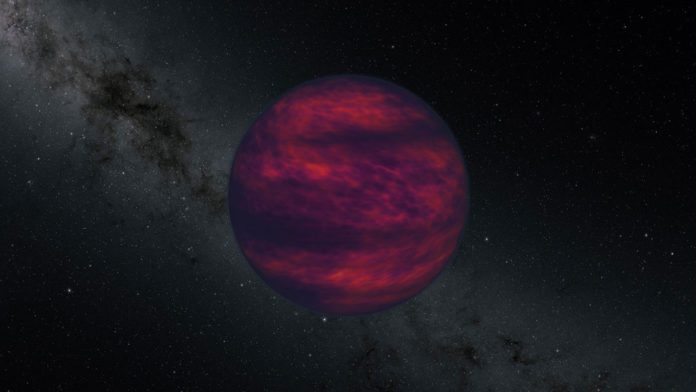Brown dwarfs are objects intermediate in mass between large planets and small stars, and their atmospheres share many characteristics with gas giant planets.
Now, for the first time, scientists have directly measured wind speed on a brown dwarf named 2MASS J10475385+2124234, which is located 32 light-years from Earth. For measurement, scientists used a new technique that could pave the way towards a better comprehension of the behavior of atmospheres that are unlike anything found in our solar system.
The technique combines the detection of radio and infrared emissions. This allowed scientists to know the wind speed of a distant object, even though they couldn’t pick out cloud movement in its atmosphere.
Brown dwarfs are composed almost entirely of gas, so “wind” refers to something slightly different.
In this study, the scientists measured the slight distinction in the speed of the brown dwarf’s atmosphere comparative with its interior. With an atmospheric temperature of more than 1,100 degrees Fahrenheit (600 degrees Celsius), this specific brown dwarf transmits a significant measure of infrared light. Combined with its proximity to Earth, this characteristic made it feasible for Spitzer to detect features in the brown dwarf’s atmosphere as they pivot all through the view. The group utilized those features to clock the environmental rotation speed.
To determine the speed of the interior, they focused on the brown dwarf’s magnetic field. A relatively recent discovery found that the interiors of brown dwarfs generate strong magnetic fields. As the brown dwarf rotates, the magnetic field accelerates charged particles that, in turn, produce radio waves, which the researchers detected with the radio telescopes in the Karl G. Jansky Very Large Array in New Mexico.
Scientists detected winds moving around the planet at 1,425 mph (2,293 kph).
Lead author Katelyn Allers, an associate professor of physics and astronomy at Bucknell University in Lewisburg, Pennsylvania said, “What’s exciting is being able to learn about how the chemistry, the atmospheric dynamics and the environment around an object are interconnected, and the prospect of getting a comprehensive view into these worlds.”
Journal Reference:
- A measurement of the wind speed on a brown dwarf. DOI: 10.1126/science.aaz2856
